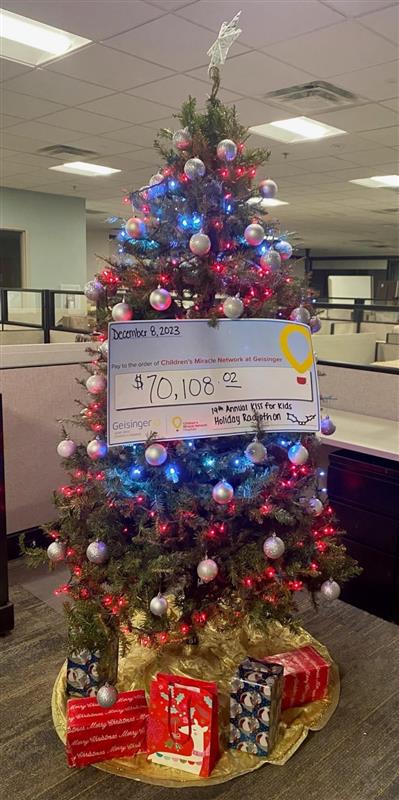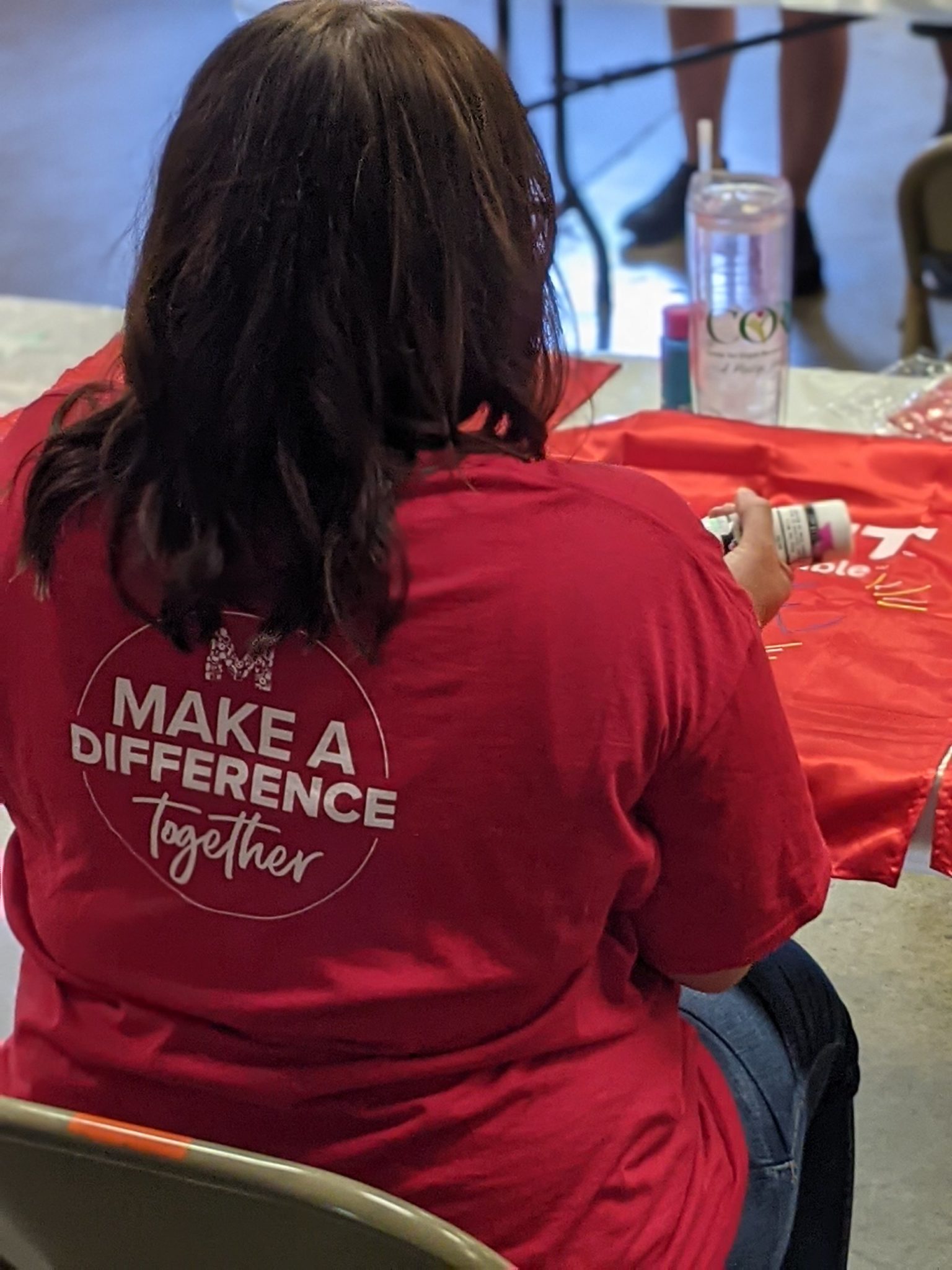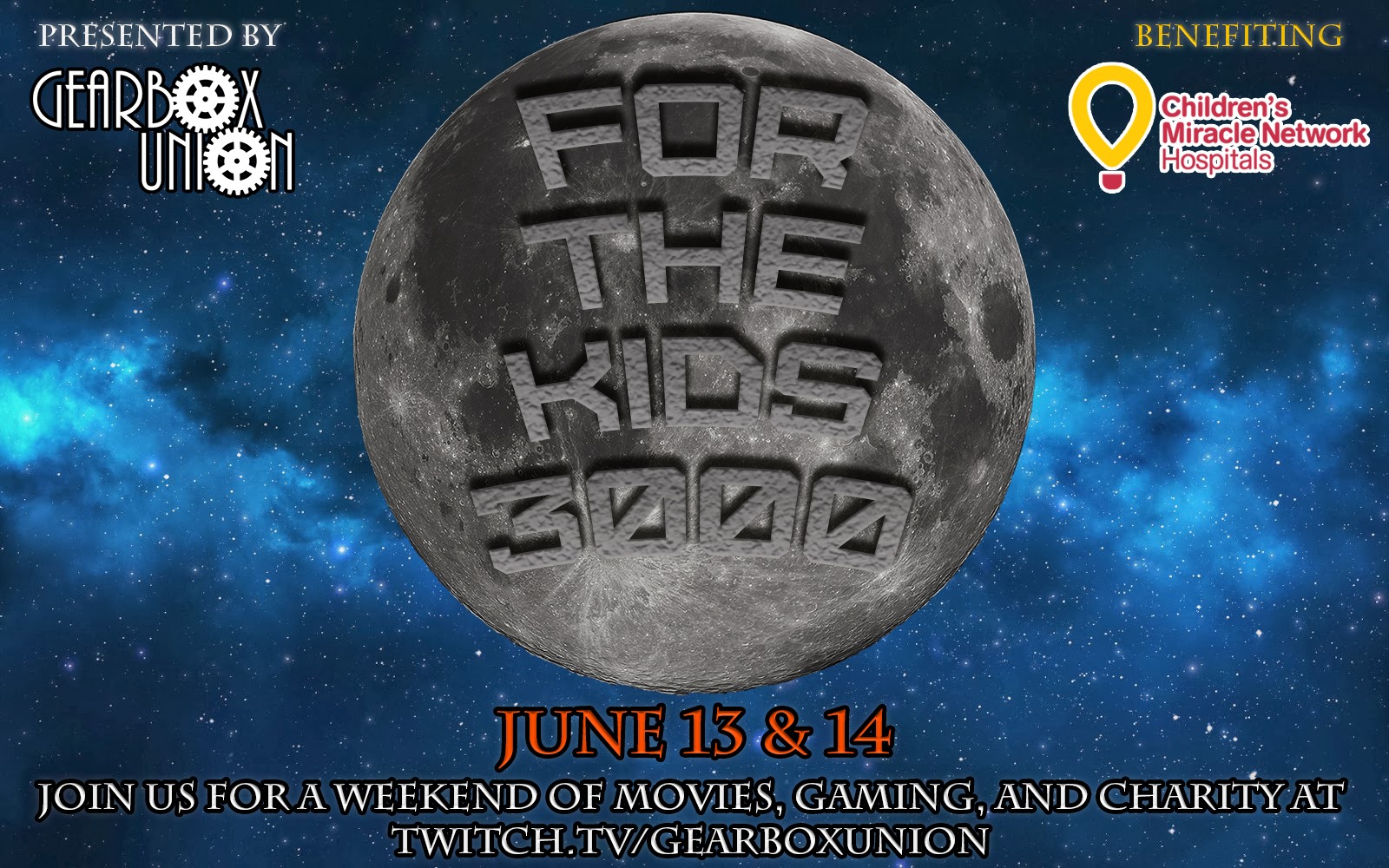2016 Miracle Kid Christopher Palumbo
Christopher Palumbo, 16, of Waverly, NY, loves the medieval era. He has a collection of swords, and knights’ helmets. He likes reading books set in the medieval era, like The Ranger’s Apprentice. He also enjoys battling ogres, dragons and thieves in video games like Skyrim and League of Legends.
But none of the fierce battles he engages in during the video games nor those fought by the characters in his favorite books compare to the epic battle Christopher faced at the age of 12. It wasn’t a mythical dragon or the Black Knight he faced. Instead it was a much more formidable adversary – osteosarcoma, or bone cancer.
In 2013, Christopher came home from rollerblading, complaining to his parents that his left knee was bothering him. They thought it might be muscle pain from using muscles he hadn’t used in some time. They waited a couple days to see if the pain would subside. It did not and his knee remained swollen and painful.
“We took him to our family doctor and she thought it was torn ligament,” said his mother, Mary Kay. She said it should heal in three weeks, but she scheduled an appointment with the orthopedic doctor and said if it didn’t heal by then to keep the appointment.”
After looking over Christopher’s x-ray of his left leg the orthopedic doctor asked the family to come to his office on Thanksgiving Day.
“We thought it was a torn ligament. The doctor felt strongly that the x-ray showed osteosarcoma and he referred us to Geisinger Janet Weis Children’s Hospital,” Mary Kay said. “We went to Danville that Monday.”
“I was surprised and shocked at the words that came out of the doctor’s mouth,” his father, John said. “But it made sense since he was so insistent that we meet, even on Thanksgiving Day.”
That Monday at Geisinger Janet Weis Children’s Hospital, Christopher was admitted to the hospital and had a biopsy performed by Thomas Bowen, MD, orthopaedic surgeon. The test confirmed that Christopher had a very aggressive osteosarcoma. He immediately received a mediport for chemotherapy and the family met with the pediatric hematology/oncology team.
“The first thing we look at with osteosarcoma is to see if it is confined to the area or metastatic, involving other portions of the body,” said Jagadeesh Ramdas, MD, director of pediatric hematology/oncology at Geisinger Janet Weis Children’s Hospital. “The good thing was it was a localized osteosarcoma. The treatment for osteosarcoma includes chemotherapy for 12 weeks, followed by surgical removal of the tumor and then additional rounds of chemotherapy.”
Surgery in this case meant Christopher would lose his left leg, but not until he went through the first 12 weeks of chemotherapy. To help alleviate some of the pain Christopher was experiencing, Dr. Bowen casted his leg.
“His pain during his initial presentation was due to weakening of the bone because of the cancer. The cast helped support the bone and improve pain, much like a splint or cast decreases fracture pain,” Dr. Bowen explained. “Once the chemotherapy started killing the cancer, the bone was able to heal and the casting was eventually stopped.”
Christopher’s first round of chemotherapy treatments were very intense. He had prolonged hospital stays because of complications associated with the treatment. Christopher and his parents spent a large amount of time in the hospital and driving from New York to Danville.
“Usually we would have a four- or five-day stay and then make the trip home,” John said. “We would be home for four or five days and then he would spike a fever and we would have to drive back. It was back and forth for some time. We pretty much made a home in Danville.”
It was a very difficult time for the Palumbos watching their son battle the horrible disease.
“One night he passed out when I was helping him to the bathroom,” John said. “It was some hard stuff.”
After completing the first regiment of chemotherapy, it was time for the surgical procedure. The combination of chemotherapy and surgery more often results in survival, but all the bone containing cancer must be taken out.
For Christopher, the lower half of his femur had to be removed. Amputation very close to the hip was considered, but would make it hard to get a prosthesis that would work well. For patients with this type of surgery there are a couple ways to reconstruct the leg. The first would be by placing a metal rod or a prosthesis in his leg.
“The problem with the metal prosthesis is that it will not last the rest of the patient’s life. It will eventually wear out or fail and the patient is faced with the possibility of several revision surgeries,” Dr. Bowen said. “In order to protect the metal prosthesis, most children restrict their physical activity and avoid skiing, basketball, soccer and other sports. It really changes their lives.”
Another alternative that Dr. Bowen explained to the Palumbo family was rotationplasty, which involves taking the remaining limb below the knee rotating it and reattaching it below the hip. The procedure allows the ankle joint to become the knee joint. The limb is rotated because the ankle flexes in the opposite direction as compared to the knee. Rotationplasty allows the patient to have a functioning knee joint for running, jumping and being active. Also patients are able to use a below the knee prosthesis, which are more reliable and functional.
“The advantage of the rotationplasty is that it’s durable. It’s live tissue, so it grows as he grows. If it fractures, you put it in a cast and it heals. It’s live bone, there is no prosthetic material to wear out,” Dr. Bowen said. “It is a path less chosen, because it makes a very funny looking leg. I’m not being rude about that, it leads to a foot that is on backwards.”
The Palumbos discussed the options and made the decision to move forward with rotationplasty.
“Dr. Bowen thought the surgery was a good thing, and I didn’t really want to take the risk of just getting a rod,” Christopher said. “Basic amputation would be really high on my leg, so I wouldn’t have had much mobility there.”
“With the rod, you would have to return for surgeries as you grow and there was a great possibility of infections,” John said. “It wouldn’t have left him with as good of mobility and that was a big thing as well.”
People who choose to have rotationplasty are special people according to Dr. Bowen.
“They are people who value function. They are the people who say I don’t want to have revision surgeries or worry about the prosthesis breaking. They want to be active and grow,” he said.
There is a psychological component to choosing rotationplasty as well, Dr. Bowen added.
“Most people walk into this situation and say, ‘I don’t want to lose my leg and I don’t want it to look weird,'” he said. “This disease comes at an age when kids are still trying to fit in and find out where you are in the world, which adds more to the decision-making process.”
Immediately following the surgery, the Palumbos were amazed and called the surgery a miracle.
“Right after the surgery, he was able to move his foot and wiggle his toes,” John said. “It was amazing.”
While examining the tumor, Dr. Ramdas was a little discouraged by its necrosis, which shows how sensitive the patient is to the chemotherapy and the risk of recurrence.
“Normally we expect the patient to have more than 90 percent necrocis, which means that the cells were destroyed by the chemotherapy or dead,” Dr. Ramdas said. “If the necrosis is above 90 percent the patient is considered a good responder. Anything below 90 percent, we call a poor responder. Chris came back with necrosis of 70 percent. ”
Christopher continued with further chemotherapy after his surgery, receiving five more months of treatment. He finished his treatment in September 2012. Scans at his first three-month checkup showed that his cancer was in remission.
Christopher was followed by the pediatric hematology/oncology team with check-ups every three months. During one of his visits in early 2014 a CT scan showed a small lesion on his left lung. A biopsy confirmed that Christopher’s osteosarcoma had come back.
The pediatric surgery team removed the nodule from his lung and Christopher underwent further chemotherapy. He finished his treatment for the relapse in May 2014 and has been doing well since.
Through his entire treatment, Christopher stayed in the hospital more than 180 days and nights, according to the Palumbos.
“In and out, not consecutively,” Mary Kay added. “The staff of Geisinger Janet Weis Children’s Hospital was phenomenal. They made us feel at home and for the longest time it was like a second home.”
John and Mary Kay stayed in the room with Christopher and met many of the hospital’s staff and witnessed how the work that was done to allow him to be a kid during his stays.
“I remember building different things out of crafts and playing games they brought,” Christopher said. “One time while they were building the new cafeteria, they let us make all kinds of paper airplanes and throw them off the balcony.”
The Palumbos said the caring staff were always trying to break up the monotony of being in the hospital and doing everything they could to make it bearable.
“Child Life would bring him whatever he wanted. We had squirt gun and nerf gun battles,” Mary Kay said. “They personalized the care. We had a nurse with a son who was an avid reader like Chris. She would share websites and places to get books.”
“We tried to make the most of it,” John said. “We couldn’t make it better for him, but we tried.”
The family made a special lifelong friend during their time at Janet Weis Children’s Hospital, Pediatric Registered Nurse Kimberly Green, who was Christopher’s bedside nurse many times.
One time when the Palumbos were in the hospital they heard about Kimberly’s house being severely damaged during a giant hail storm.
“I was there so I went over and helped her and her family clean up,” John said. “It got me out of the hospital for a little bit and gave me the opportunity to give back to this person who had done so much for us.”
The relationship continues to grow between the Palumbos and Kimberly.
“We were invited to her wedding and recently to her son’s birthday party,” Mary Kay said. “They are really good people.”
“Kimberly invited us to go with her and her family to a Renaissance Fair this summer in the Lancaster area,” Christopher said.
Christopher is now in 10th grade, participating in gym class, in his high school’s marching band, on the golf team and was recently inducted to Honor Society. He is growing normally and his reconstructed leg and prosthetic are growing right along with him. He has grown 8 inches since the surgery and hasn’t needed surgical revisions.
He likes chemistry and routinely volunteers to help out with out-of-class labs and projects. He is thinking about pursuing a career in the health field, but is leaning more toward medical school.
“He learned a lot being at the hospital as much as he was. It was kind of like on-the-job training,” John said.
One thing all of Christopher’s caregivers agreed on was that the miracle in his journey was not the medicine, the procedures or the care provided but instead the spirit and attitude of Christopher and his family.
“He is a phenomenal kid. In my eyes the miracle is his ability to overcome all these obstacles,” said Becky Sneidman pediatric hematology/oncology nurse practitioner. “Just think of yourself as a teenager going to school with what could be a horrible handicap. Chris never looked at it that way.”
Christopher is not out of the woods with his battle with osteosarcoma but Dr. Ramdas is encouraged with his current health and his ability to overcome the 2014 relapse.
“He had a very challenging disease, which carries a high mortality. It is very encouraging that when he had the relapse, he was able to recover from it,” Dr. Ramdas said. “Osteosarcoma, when it comes back, usually carries an extremely bad outcome. He was able to beat those odds.”
Dr. Bowen attributes Chris’s ability to overcome the disease to his amazing personality and family.
“The miracle is not in the technology or the health care. The technology and healthcare is somewhat disappointing. I have so much better dreams for what the technology could be and what I want it to be,” Dr. Bowen said. “The miracle is that he and his family can be faced with a life-threatening illness, be faced with less than what we would like in treatments, and yet, they stayed together and love each other. They overcame very difficult odds and came out of it with friendships not only with themselves and their community but friends with the hospital. That’s the miracle.”
For now Christopher can sheathe his sword and hang up his shield and helmet and enjoy battles in his video games and fantasy books and hope that the battle against cancer is at an end.
“Osteosarcoma is a really horrible disease. It kills a lot of kids. Christopher and his family are the kind of people, where despite a really terrible disease and a disturbing treatment they overcame it,” Dr. Bowen said. “They are really special people and I feel very blessed to know them.
“I really do feel Chris is set apart for something special. I don’t know what it is. I hope before I retire I get to see what it is, but I really do feel there is something special about him. He is beating the odds,” Dr. Bowen added.
Donations to Children’s Miracle Network at Geisinger provide activities and resources for the Child Life Department who helped Christopher and his family during their many hospital stays. Funds also are used to provide equipment for the Pediatric Rehabilitation Department, which helped Christopher after his surgery. Christopher is also a regular participant in Camp Dost, a Program of the Ronald McDonald House in Danville. Camp Dost, which receives money from Children’s Miracle Network at Geisinger, allows kids who are fighting or have overcome cancer to spend time together in a special one-week camping experience.






